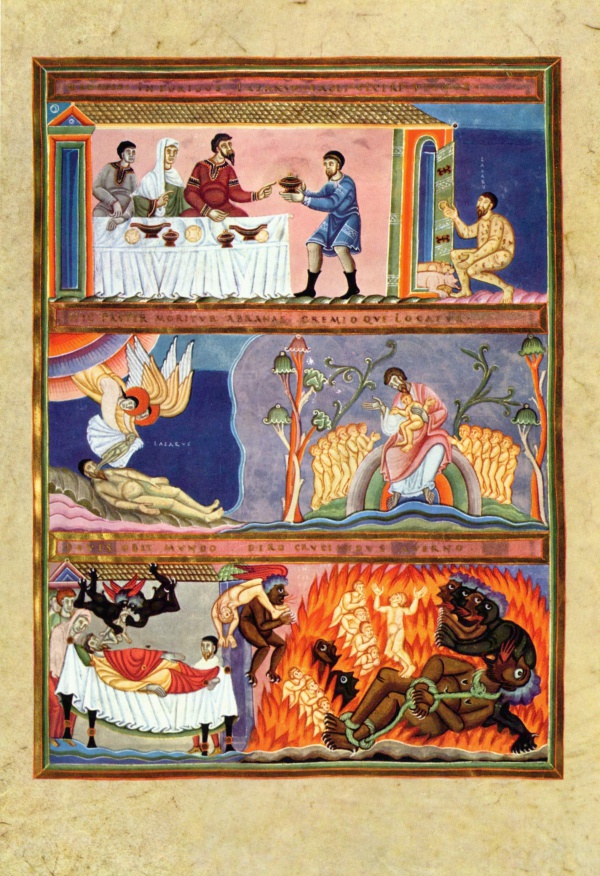Facts About Codex Aureus of Echternach
The Codex Aureus of Echternach is an illuminated Gospel Book created between 1030 and 1050. It is currently housed at the Germanisches Nationalmuseum in Nuremberg. This manuscript contains the Vulgate versions of the four Gospels, alongside some introductory material. It stands as a resplendent example of Ottonian illumination, produced at the Abbey of Echternach under the guidance of Abbot Humbert.
The manuscript comprises 136 folios, each adorned with intricate illuminations, including decorative pages, miniatures, initials, and portraits of the evangelists. The text itself is written entirely in gold ink. Each gospel is introduced with summary pages, textile imitations, narrative scenes, and full-page miniatures that depict the life and miracles of Jesus Christ.
The front cover of the Codex is an Ottonian treasure binding that predates the manuscript by approximately 50 years. It features an ivory plaque depicting the Crucifixion of Jesus, surrounded by panels of repoussé gold relief, gem-set gold filigree, and cloisonné enamel. These reliefs illustrate the Four Evangelists, Emperor Otto III, and other saints associated with Echternach Abbey. The gems on the cover symbolize the richness of the Heavenly city and were believed to possess mystical properties.
The manuscript has a rich history. It was once owned by Henry III, Holy Roman Emperor, and was moved from Echternach Abbey to the Germanisches Nationalmuseum in Nuremberg following the French Revolutionary wars. In 1801, it was sold to Duke Ernest II of Saxe-Gotha-Altenburg and was later acquired by the House of Saxe-Coburg and Gotha. After World War II, the manuscript remained in Germany, thanks to joint funding efforts primarily led by Bavaria, and it was transferred to its current home.

 Switzerland
Switzerland